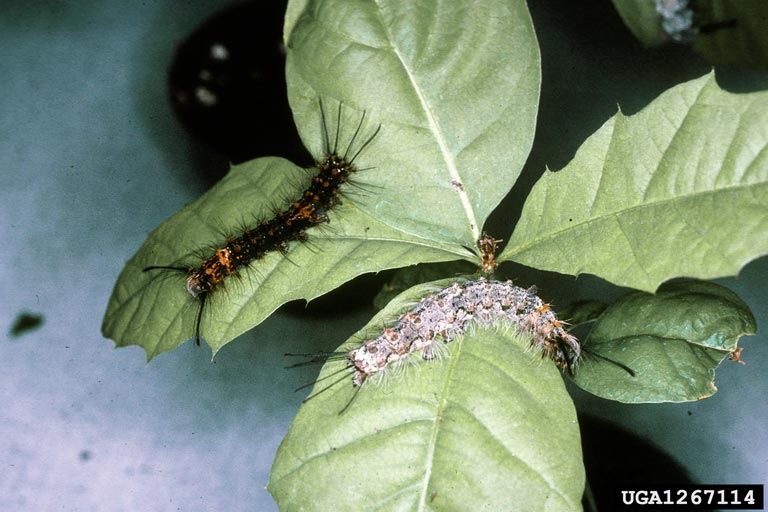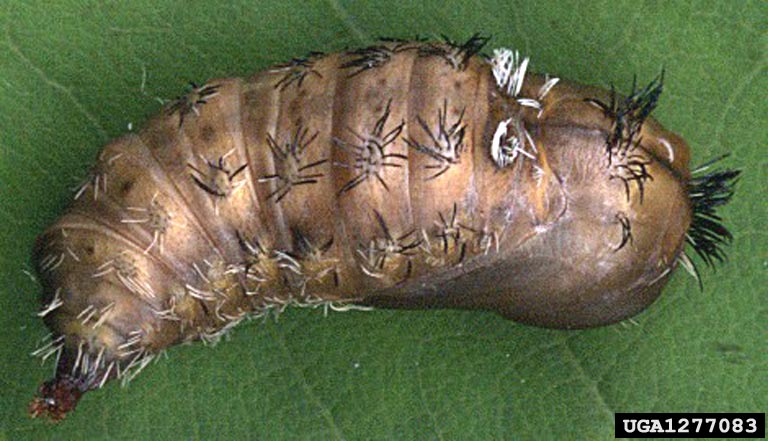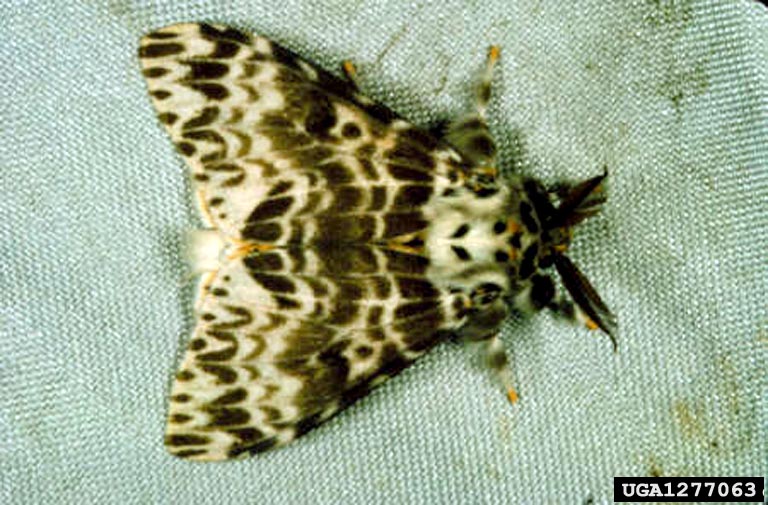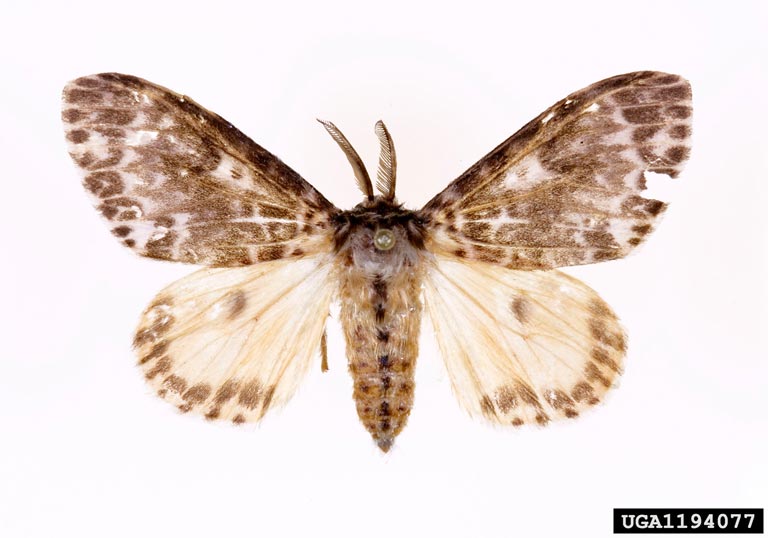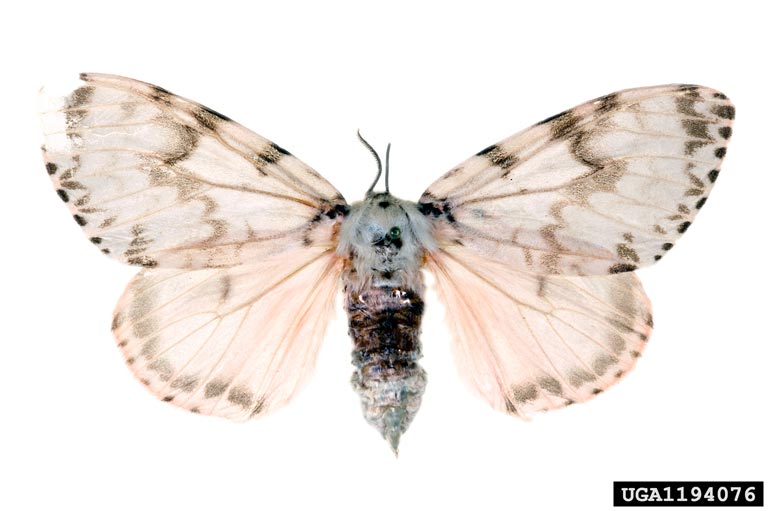Rosy (pink) gypsy moth
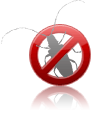
- Order: Lepidoptera
- Family: Lymantriidae
- Latin: Lymantria mathura Moore
- English: Rosy (pink) gypsy moth
- French: Spongieuse rose
Description
Distribution
This species is not found in Canada
Diet and feeding behavior
Phytophagous / Phyllophagous / Free-living defoliator
Micro-habitat(s)
Damage, symptoms and biology
Lymantria mathura has one or two generations per year. It has one generation in Japan, and two in India. Eggs of the second generation overwinter. Females lay eggs usually on tree trunks and use scales from their anal tufts to cover the egg masses after oviposition. The larvae consume leaves and flowers. In the Far East of Russia L. mathura flies between 01:00 and 03:00 hours. This overlaps with the peak activity of L. dispar (gypsy moth) at 01:00 hours and with the peak activity of L. monacha (nun moth) at 03:00 hours.
Inspectors should look for eggs on stems of nursery trees, logs, forest products, sea containers and ships.
Comments
The moths are moderately-sized, hairy and heavy-bodied. The females bear a thick anal tuft of scale hairs and the last three abdominal segments are extended. The ovipositor of L. mathura is elongated, but not as much as that of L. monacha. The hind wings of the female L. mathura are pink, those of the male are yellow; female wing-span is about 84 mm, that of male about 46 mm. The larvae are stout-bodied with prominent bristles. The larvae of L. mathura are peculiar in having one pair of anterior and two pairs of posterior hair pencils (long hair tufts).
References
Pogue, MG, and Schaefer, PW. 2007. A review of selected species of Lymantria Hübner [1819] including three new species (Lepidoptera: Noctuidae: Lymantriinae). United States Department of Agriculture, Forest Health Technology Enterprise Team, Pub. No. FHTET-2006-07. 223 pp.
(http://www.fs.fed.us/foresthealth/technology/pdfs/Pogue_Lymantria_web.pdf, accessed 23 Jan 2008).
Other resources
- Rosy (Pink) Gypsy Moth - Lymantria mathura Moore
(Canadian Food Inspection Agency)
Information on host(s)
Main Host(s)
Apples, beeches, cherries / plums, common pear, oaks
